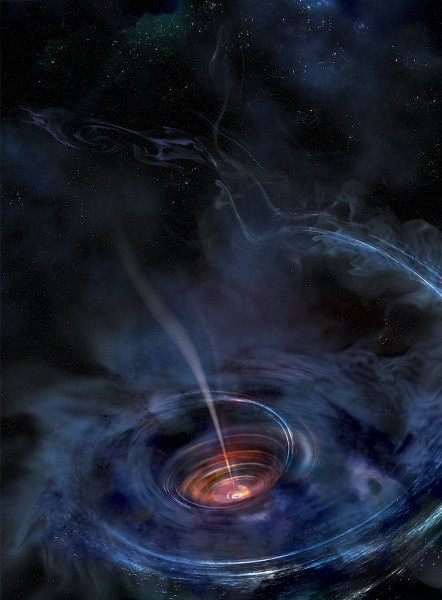For the first time ever, astronomers have mapped out gas flow inside a supermassive black hole known as Swift J1644+57 which apparently was dormant and then suddenly woke up to destroy and devour a star that strayed too close to it.
Astronomers from the University of Michigan and University of Maryland are the first to document this cosmic phenomenon with X-rays that bounce off from the deep walls of the black hole's newly formed accretion disk after this tidal disruption.
This new accretion disk can be described as a puffy, gigantic cloud of the unfortunate star that has been obliterated and shredded into wisps as stellar material is now encircling this black hole that will eventually be swallowed whole. In this new study, this new method of observing black holes can help measure the spin inside a black hole.
This monster black hole apparently destroyed this star some 3.9 billion years ago, however, X-rays from this destruction event reached Earth only in 2011, as detected by NASA's Swift Satellite. These rays were picked up by flares that is located near the black hole that possesses nearly a million solar masses, which then produced bouncing X-rays from this accretion disk and ultimately revealed this cosmic beast.
This afterglow was detected as X-rays interacted with iron ion particles that were swirling in a frenzy in this stellar gas inside the supermassive black hole. Now, this disk is made from stellar debris that collapsed inside this colossal black hole.
According to lead author of the study, Erin Kara from the University of Maryland, it is still unknown what causes these X-ray flares near this supermassive black hole, although we know that in this one, we can detect its echoes after a few minutes when the light already reaches the illuminated parts of this after glow.
This special technique is known as X-ray reverberation mapping which has been used in the past to explore stable disks around black holes however, this marks the first time that we applied this method to a newly formed disk that was generated by tidal disruption, Kara adds.
The results of this study also yielded surprising results as high energy X-rays emanated from the inner part of this accretion disk. Astronomers initially believed that most of these gas emissions were traced from a narrow jet stream of accelerated particles travelling at the speed of light. Swift J1644+57 is only one of three tidal disruptions that can produce high energy X-rays.
This new study offers a glimpse of how the universe behaved in its early evolutionary stages, playing a crucial role in how galaxies were formed. This new study is published in the journal Nature.



























